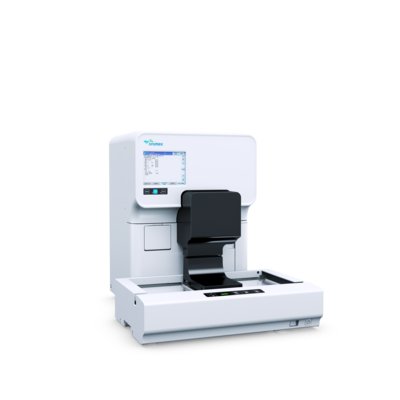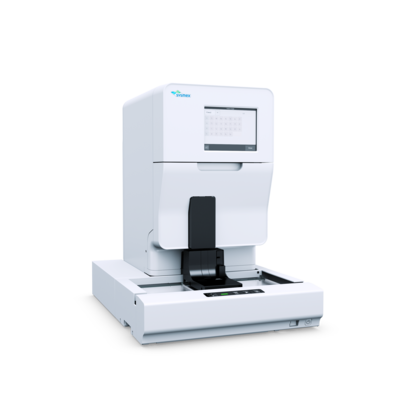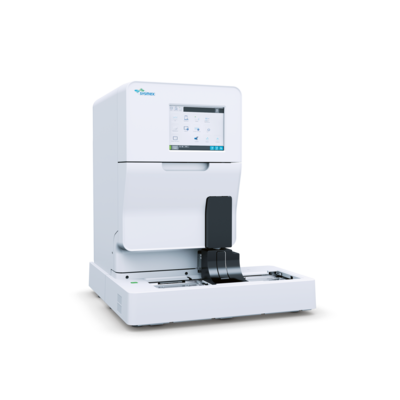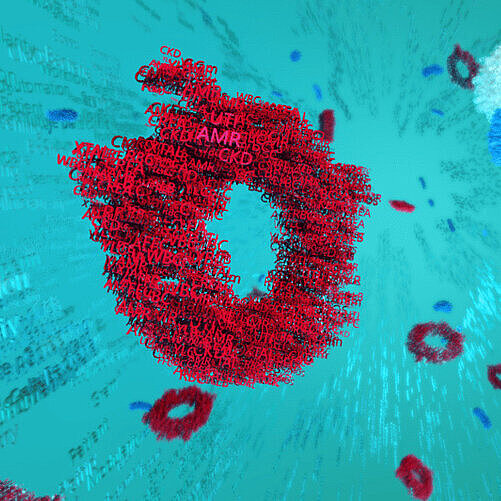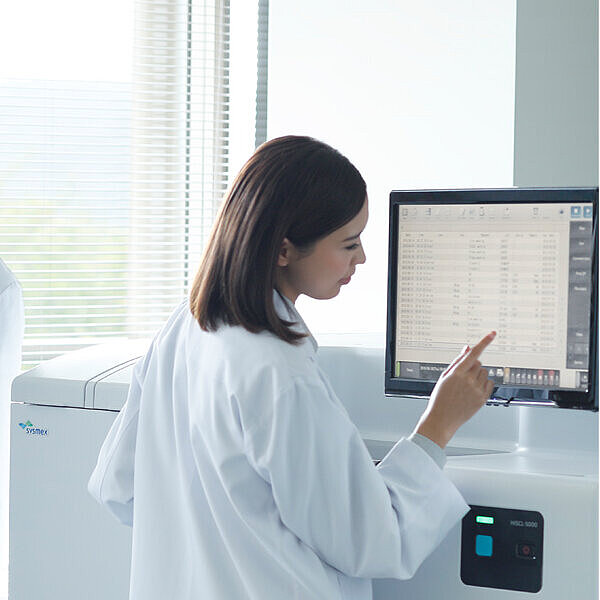The next step towards faster urinalysis
Xtra article edition 2/2019
Text: Verena Fischer
How flow cytometry improves the workflow in microbiology and allows early diagnoses as well as targeted antibiotics treatment programmes
Dr Peter Keller has been working on optimising the workflow in urine microbiology with the help of automated systems for many years. When the medical professional took over the management of the Automation Unit at the Institute of Medical Microbiology of the University of Zurich, one of the first things he did was to purchase the UF-4000 urine flow cytometer for the Microbiology Department.
Of the around 80 urine samples that are analysed every day at the University Hospital in Zurich, only around 20 percent contain any relevant findings. “If these are identified promptly, the workflow can be greatly accelerated,” explains Dr Keller. “In principle, we can save 80 percent of the sample throughput that would otherwise have to be evaluated at a microbiological level by plate cultures. And that’s an important aspect in terms of time and cost, of course.”

Study proves time savings
The team in the Microbiology Department organised a study to check just how much time could be saved by flow cytometric analyses of urine samples. Urine samples were hereby pre-screened by the UF-4000 for the presence of leucocytes and microorganisms. The urinalysis system also considered the Gram properties of the bacteria. The samples were then spread automatically by a laboratory robot onto culture plates before the experts examined these 13 and 18 hours later for signs of growth.
“This evaluation study checked whether the urine samples characterised as negative by the UF also had a negative culture. And this proved to be the case in this set-up,” explains Dr Keller. The medium-term plan is that only those samples that have been characterised as positive by the device will be cultured.
Advantages for the laboratory and hospital
“The introduction of the UF-4000 can reduce the workload on staff, leaving them around 50 percent more time to take care of other things,” reports Dr Keller. At the same time, patients with a negative result receive a report letting them know much faster that there are no relevant bacteria or yeast-like cells in their urine and other reasons will have to be sought for their symptoms.
This is the biggest advantage of the procedure for medical professionals, because without automation it would take some 18 hours to identify bacteria. This is followed by a resistance test, which in turn takes 24 hours, so that patients have to wait a total of two working days for their results. “Since we started using the UF-4000, we can now administer antibiotics on the same day,” explains the microbiologist.
Tests have proven that urine samples characterised as negative by the UF also have a negative culture
This is particularly important with bladder infections, one of the main indications for the administration of antibiotics. The new Gram +/– flag of the urinalysis system supplies valuable additional morphological information for their detection and supports a targeted treatment with antibiotics. “The critical mass for a resistance test is the number of bacteria that can be accommodated on a plate.
If you want to measure this under a microscope you have to wait at least four hours until it can be detected on the culture plate,” explains Dr Keller. “Flow cytometry lets you determine how many bacteria there are in a microlitre of material much faster and more precisely. This is a big help.”

Easier diagnosis
The Institute of Clinical Chemistry at the University Hospital in Zurich has a UF-4000 to analyse cerebrospinal fluid and puncture fluid from joints. The urinalysis system has a body fluid mode to analyse body fluids; this offers seven diagnostic parameters at the press of a button, including leucocytes and bacteria, so that meningitis can be safely detected with a low number of bacteria, for example.
Since both clinical chemistry and microbiology benefit from the use of the UF, a collaboration may be useful here. “This is feasible in those sites in which clinical microbiology and chemistry are in the same laboratory,” explains Dr Keller. “Unfortunately, regulations currently make this rather difficult.”

Both clinical chemistry and microbiology benefit from the UF-4000
Adjusting tariff models
European microbiology laboratories have yet been unable to obtain reimbursement for urinalyses by means of flow cytometry in every country. The classic domain where these devices are installed is clinical chemistry. Microbiology laboratories should now lobby politicians to adjust the corresponding tariff models so that they can use them too, Keller believes. “Urine diagnostics is undoubtedly the field with the highest throughput.”
PCR systems are still being used to analyse puncture fluids from joints and to test for infections associated with the central nervous system.
“However, these cost between 70 and 120 Euros in Switzerland for each process,” says the microbiologist. “If I can perform a flow cytometry – at only a fraction of the cost – that can tell me that the specimen doesn’t contain a relevant number of bacteria, this really speeds things up and is much cheaper too.”
A single urine flow cytometer is enough to handle the sample workload of a medium-sized microbiology laboratory. “In the medium term, I believe it is sensible to acquire two devices so as to guarantee their availability,” says Dr Keller.
Summary
- Urine flow cytometers take the pressure off microbiology laboratory staff and speed up the diagnostic process.
- The UF-4000 with the Gram +/– flag supports the clinician to decide on a targeted antibiotic treatment
